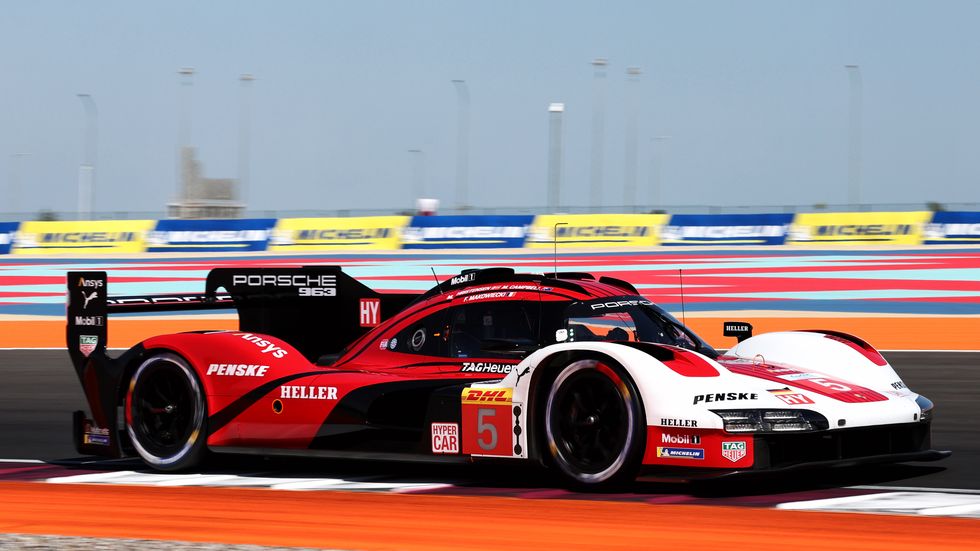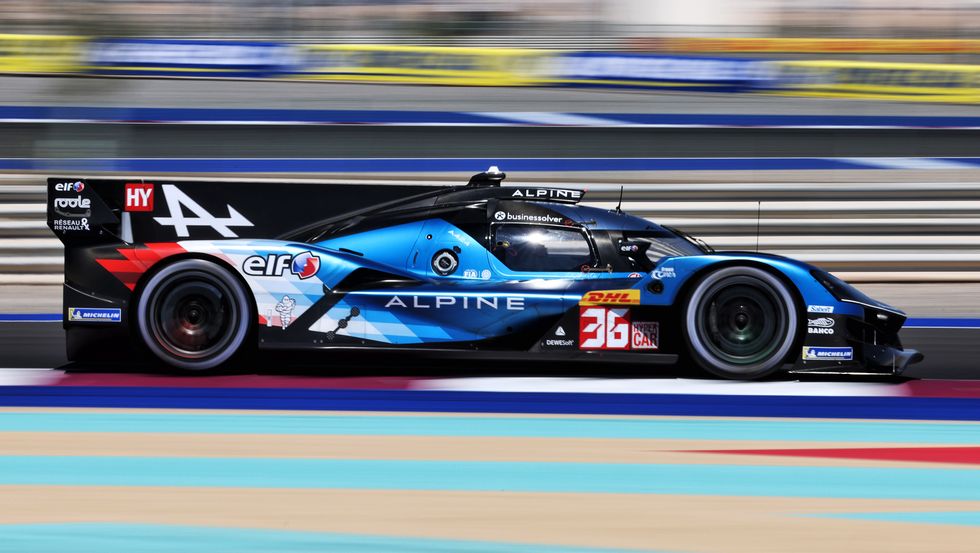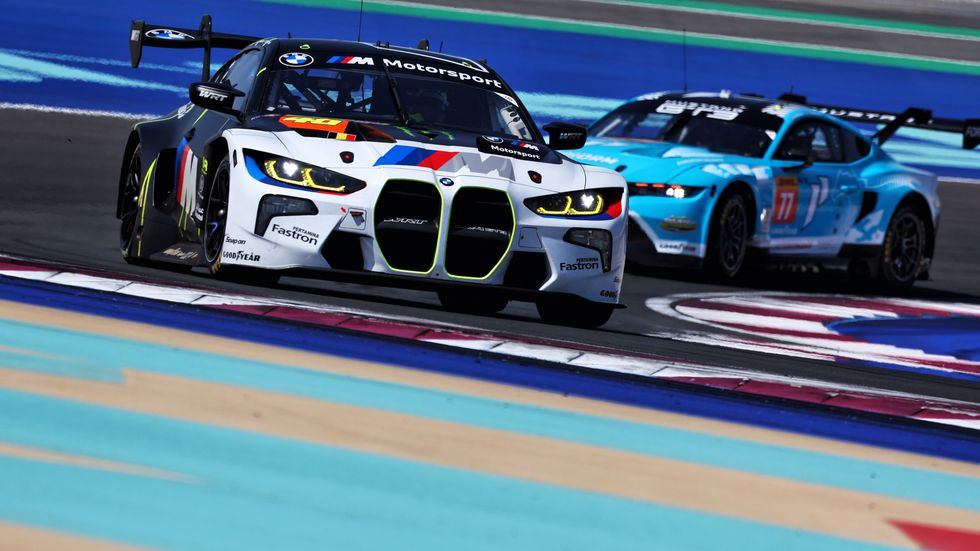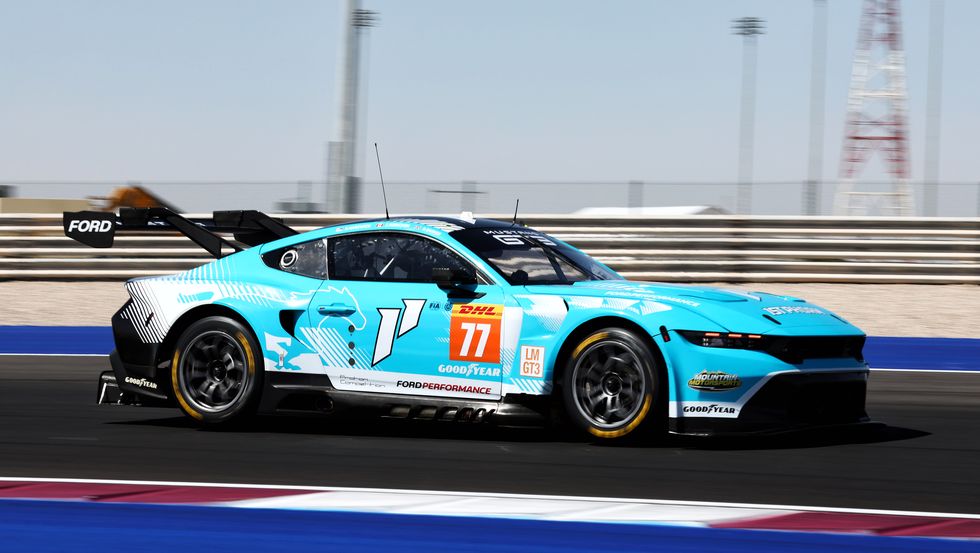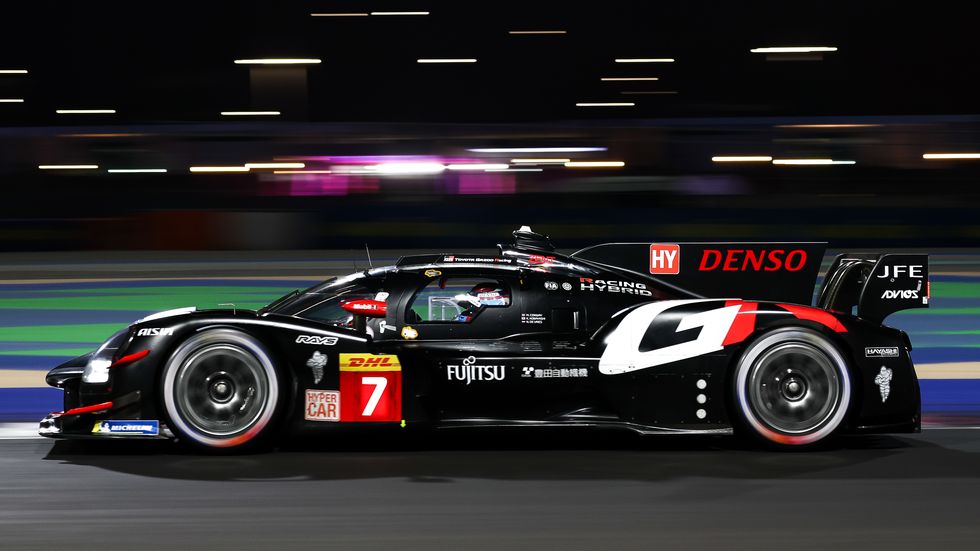The World Endurance Championship embarks on what promises to be an interesting season, starting with a 10-hour season opener in Qatar on Saturday.
Before the green ever drops at the Lusail International Circuit, the starting grid alone confirms happy days have dawned for a championship too often in search of manufacturers in the past and a world standing.
But nothing is perfect, least of all any racing series. Here’s the Good, the Bad, the Strange, Curious and Ugly when it comes to this year’s eight-race WEC season, including a U.S. round at the Circuit of Americas on Sept. 1.
One hopes it will be a lucky 13th season for the WEC.
The Good
Nineteen Hypercar and LMDh category cars have gathered in Qatar for the first round, an extraordinary number for a new prototype category launching its second year, especially given that they are cutting edge hybrids. And that Aston Martin will join next year.
Last year’s teams, including champions Toyota, Le Mans winner Ferrari and Daytona winner Porsche, face the new prototypes from Alpine, BMW, Isotta Fraschini and Lamborghini plus privateer Porsche and Ferrari entries.
To what do we owe this occasion of so many beautiful prototypes with their extended wheel bases? I’d give the credit to Pierre Fillon, the president of the Automobile Club de L’Ouest at Le Mans, and Jim France, the chairman of IMSA. The day these two agreed to a cost-capped convergence of platform hybrids in IMSA and ground-up Hypercar prototypes in the WEC was the day endurance racing’s future changed for the better.
These two gentlemen have lived through the previous iterations of the self-destructive mutual isolation between Europe and the U.S. and apparently learned something. What about the FIA? It was always the fly in the pie, bent on promoting F1 at the expense of sports cars. Fortunately, the WEC is effectively a step-child of Le Mans.
For those doubting if the universal platform IMSA cars would ever get a fair shake against the Hypercars under the Balance of Performance at the WEC, the Prologue test days and the first rounds of free practice indicated the Porsche Penske Motorsport Porsche 963 as well as privateer entries will be in the hunt.
Matt Campbell claimed the pole with a flyer at the finish during this year’s special 10-minute qualifying session. It was the first pole for an LMDh entry. The privateer Jota Porsche took third on the grid behind the runner-up Toyotoa GR010 HYBRID of Nick de Vries.
“Our work during the past season and over the winter is obviously yielding the results we had hoped for,” said Urs Kuratle, director of the LMDh program for Porsche. “The triumph in Daytona underlined some very important things for us,” he continued. “The team worked perfectly from an operational standpoint, and the Porsche 963 was fast and reliable over the 24 hours.”
The Cadillac V-Series.R of Chip Ganassi Racing, qualified by Alex Lynn, will start seventh.
The influx of new drivers to the WEC is another positive sign. There are 26 rookies coming into the series full time, including Mick Schumacher with Alpine, and, at Le Mans, Alex Palou, who will drive a Cadillac for Chip Ganassi Racing in the French epic.
In LMGT3, which accounts for the bulk of the series newcomers, MotoGP champ Valentino Rossi will segue from two wheels to four in a BMW M4 GT3 with WRT. Spaniard Daniel Juncadella, a regular in IMSA, will drive a Corvette Z06 GT3.R for TF Sport.
Former F1 champion Jenson Button returns to the WEC, one of 16 drivers with F1 experience. Ryan Hardwick (Mustang GT3/Proton Competition) and Ian James (Aston Martin Vantage/Heart of Racing) are the two Americans competing at Qatar.
The Bad
One can also point to an incredible grid of GT machinery at Qatar composed of 18 starters from nine manufacturers. That’s a big bounce from last year’s four factories.
Alas, those at Le Mans hung on far too long to their GTE-AM category. A strong grid of GT3 machinery has been in the cards for years, but apparently “not invented here” kept them and their manufacturers at bay. The many minions at Le Mans just could not choke down that Stephane Ratel and the FIA successfully executed an end run with the GT3 category over the course of two decades. The coup de grace was Corvette and Mustang joining the GT3 ranks, which in the WEC, of course, is known as LMGT3…
So now there’s a surfeit of applicants, which left Audi and Mercedes-AMG on the LMGT3 sidelines.
Something about a limit of nine manufacturers and the rule of two cars for each manufacturer…
The Curious
Will Chevy and Ford find a competitive footing for their Corvette Z06 GT3.R and Mustang GT3 on a crowded WEC grid?
Ask Tom Van Rompuy, who won the first LMGT3 pole on board the TF Sport Corvette.
It bodes well that the teams running the American cars, TF Sport and Mustang entrant Proton Competition, are familiar with GT3—as are their respective drivers.
“We’ve worked really hard this week to improve the car and improve ourselves,” said Van Rompuy. “The team did a mega job, as did the guys at Corvette and Pratt Miller. In the end, we made it all work so this is a team effort. I could put a really good lap together, and I’m really amazed with this result.”
For all competitors, the range of BOP weights and maximum power is relatively close, in part due to the inevitable success ballast added automatically for race winners.
The Strange
The dedication to alternate fuels has long been a conceit at Le Mans. This has included a vehicle powered by human waste product gathered at the track, believe it or not, and several other failed prototype initiatives designated for Garage 56.
Next up are hydrogen-powered prototypes. Le Mans has committed to adding this brand of alternate power source to the current Hypercar and LMDh entries by 2027. Toyota has dedicated considerable resources to this project, which means it’s likely to happen.
The Ugly
One cannot discuss endurance racing without the specter of BOP. To some, it’s a way of organizers deciding who wins or who loses. Organizers, of course, see it as a means of balancing the different types of machinery that inevitably show up in sports car racing.
It’s been said that Toyota has a bullseye on its back after five consecutive WEC manufacturer and driver championships. Including the Prologue and first two rounds of practice in Qatar, it appeared that the Toyota’s newly assigned hefty weight could well be a handicap over the course of a full race distance, because it has caused excessive graining in tires.
On the other hand, Porsche received additional weight (2 kilos) and lost more than 10 horsepower. But the Porsche 963 was a leader during the Prologue, free practice and in qualifying in the hands of several drivers.
Read the full article here



